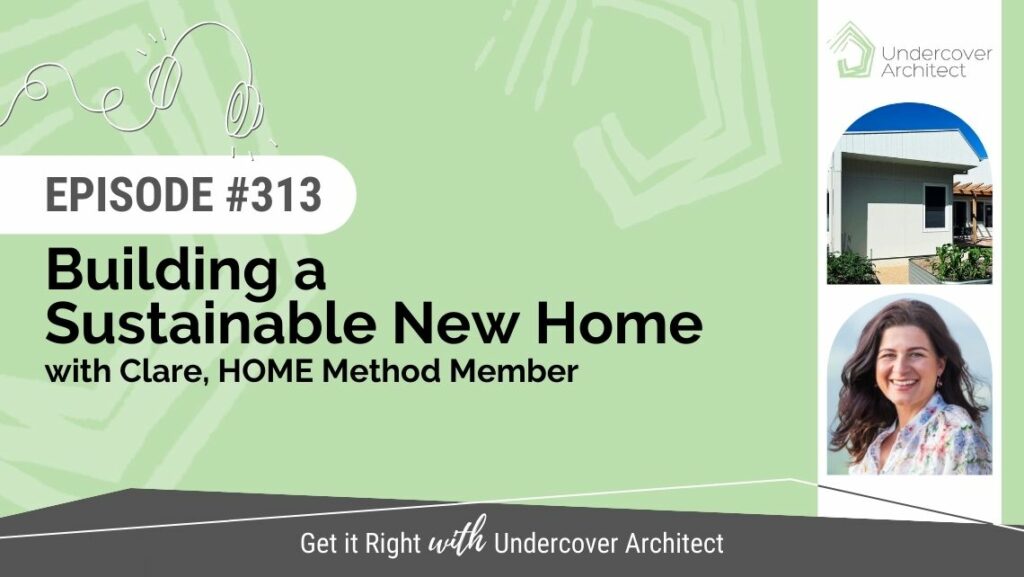
If you’re building a sustainable new home, how do you get it right?
Listen as homeowner, Clare, shares the steps she took to make it happen for her, and what she did to upskill herself to achieve a great, affordable outcome in her family home.
Listen to the episode now.
Hello! This is Episode 313, and in it, you’re going to meet Clare.
In September, 2023, Clare finished building a new home. Working closely with her team, including a building designer and builder, and with HOME Method as her support and guide, she’s created a fantastic, sustainable home for herself and her family on the beautiful Fleurieu Coast, South Australia.
In this episode and the next, Clare shares some amazing gems of know-how and insights into what’s really made the difference in her project.
LISTEN TO THE EPISODE NOW.
Clare also talks through finding and choosing her team, getting her design right, and the selections and decisions that she prioritised to stay on track to her vision and goals.
It’s a fantastic and super informative conversation for anyone who is wanting to build or renovate their home in a sustainable way, and also in alignment with their personal values and priorities.
Building a new home can feel like a really big undertaking for the uninitiated. Because you’re literally turning vision, thoughts, ideas, wishes and wants into physical reality. Things that feel dream-like become a real home, that then supports real, everyday life.
And so, getting that right can also feel like a really big undertaking. Working out what will be important, what will really matter can feel like you’re wading through all.of.the.things you wish and want for your future home and your future life.
You’ll hear Clare talk about spending time on her Design Brief, which is one of our early steps inside HOME Method supported by my Brief Builder template. How that Design Brief acted as a guide and clarifier throughout her project. And how, now looking back at it 3 years later, the finished home is a true reflection of those initial desires and ambitions.
I do hope you find this conversation helpful. I was sitting there the whole time thinking “you’re a star student, Clare” as I heard over and over how Clare has applied the learnings, tools and resources in HOME Method to achieve such a great outcome in her project.
Here’s Part 1 of my conversation with Clare.
Now, let’s dive in!
This is the transcript of my conversation with Clare about the choices and decisions she made to create her new, sustainable home …
Amelia Lee
Well, Clare, I am so so so excited to have you here because this is the first time we’ve met on Zoom. But you have been in Undercover Architect’s world as an online course member since, I was looking back, you joined How to Get It Right, which was the initial iteration of HOME Method back in 2020 – August 2020. And so we have been in each other’s orbits for a very long time.
And you’ve been beautiful at how you’ve shared your project journey with the HOME Method community in the Facebook group. And I’ve watched how intentionally you’ve created the outcome that you’ve achieved, and now celebrating that you’ve moved into this home and you’re living in it and what that’s doing for your lifestyle.
And so to actually be having this conversation with you, I’m so chuffed and so grateful that you’re able to come on and share your journey, because I know it’s going to be super helpful for those listening to learn more about how you approached your new build project to create the home that you did. And I know it was done in alignment with some very significant values and priorities for you. And you were very, very deliberate and intentional about what you were doing. And then, of course, juggling that with all of the regular demands that everybody is in terms of budget, and demands on your time and your life, and what the site needed, and all of that kind of stuff.
So I was wondering if we could just kick off by understanding who did you build this new home for? Who lives in this home?
Clare
Sure. I’m really, really pleased to be here. Thank you, Amelia, for having me.
So who lives here? Myself and my two children. My kids are 10 and 6. I just had to remind myself of their ages, 10 and 6, and a puppy as well. And we live on the beautiful Fleurieu Coast, just outside of Normanville in South Australia.
Amelia Lee
And when you embarked on this ambitious adventure at the beginning, what was your plans or view for what you wanted to create? How did you go about thinking about the home and what your dreams were for it in terms of how you wanted it to be?
Clare
Yeah, I think building a sustainable home has always been something I’ve been quite interested in. I think it was probably over 20 or more years ago, I did a Year 9 science project on building an off grid house, complete with compostable toilets and all of that kind of thing. So I think that’s always been in my mind and having this desire to do something that was climate responsive and intentional. And I guess it reflected the environment that we live in.
So I lived in Canberra for 20 years. And Light House Architecture and Science, I know that you have a strong connection with and have been on the podcast before… The work of Light House is really quite influential in Canberra. And coveting a Light House house is something that a lot of people do. And I was lucky enough to visit Jenny Edwards’ home for a previous Sustainable House Day. And again, that was really influential for me, thinking about how this can be done with a lot of intention. I really like their aesthetic as well, and just how they’re able to combine that aesthetic with this functionality, and the sustainable values as well.
So I moved back to South Australia at the end of 2019. And a few changes to family along the way, but had the opportunity to purchase a block here. And yes, start on that dream of building a house in 2021.
The empty site ready to be built on [SOURCE]
Amelia Lee
Fantastic. So in terms of can you remember back… So you’ve bought this block of land, it’s in a beautiful location, you’ve got the beach nearby, really tapping into a quality of life and lifestyle that’s possible when you’re living in that type of environment… Do you remember what you were nervous about? Or, you know, if you were starting in 2021, and you bought that block of land in 2019, there’s a bit of time between those two things.
Can you think back to what you were most concerned about getting right or what you were worried might go wrong? Or how that journey was going to look for you, and what led you to thinking about, “Okay, I actually need to invest in my learning here. I need to get some structure to this. How is this going to work for me?”
Clare
Yeah, there are a couple of things. I think I’m a bit of a perfectionist, I think that one of my greatest fears is that the reality might not live up to the dream that I have. And while something exists as a fantasy, and on a piece of paper, it can be as perfect as you like. And so there was a little bit about that, and knowing myself that actually this is going to be uncomfortable because it may not live up to these perfect expectations that I have of myself and others and what I can create. So that was probably one thing.
The other was doing this by myself, as a woman, in the construction environment, I felt that there was a potential for me to feel a little bit uncertain about what I could contribute, and how the relationships should work. So having some support and some evidence and some information that helped me to go into conversations with more information, and to ask the right questions was really, really important. I think another thing is, maybe it’s quite minor, I have a brain that really struggles to visualise things in three dimensions.
And I know that I wanted to build a custom house so I couldn’t go to a project home designer and say, “I want that one,” and get the feel. So I really needed all that really practical information about how room layouts work, and sizes, and all the information about materials, in order to be able to visualise what I wanted to construct. And I’m just a bit of a nerd as well. So I really like to be up to date on new information, new science. The building industry is just, there’s so many changes.
Amelia Lee
And so you worked with a building designer? And can you explain a bit about what the journey was of looking for the right team, and how you went about that? We joke in HOME Method that sometimes you have to kiss a few frogs before you find the right fit in terms of who you’re going to work with. I think too, you shared with me your brief, it’s beautiful in terms of the level of intention, description about how you wanted to live, what your values and priorities are… It’s not prescriptive insofar as “We want these kinds of spaces, and we want these functions,” but it’s not “We need this and this connected in this way.” Some people do draw a floor plan, you’ve not done that. You’ve literally done this written document, and you’ve got there links to ideas, boards and those kinds of things.
So did you do that first and then start interviewing designers? And how did you have that conversation and then find the right fit in terms of putting your team together?
Clare
So I had initially embarked on a building project on the site, and then that reached a conclusion with some changes to the family situation. So I’ve learned a lot through that process. And I think that that’s something that, I think, if I was advising other people about their journey… The false starts do add up. You learn so much from them that they’re not not wasted time.
But when the time came to restart this building project… I live in Fleurieu Peninsula in South Australia, I really wanted to work with a local designer and builder. This place is so special to me, and I really wanted to work with local professionals who also really loved this place. So I actually met Lachie McEwen from Harmonic Home Design, who I know that you’ve referenced on the podcast before in your opening episodes with Mel Lupis, I think there was a common meet a designer day that maybe Renew or someone was putting on. And I just hopped on a Zoom call with Lachie and had a chat to him. And I think we really aligned in terms of the values that we had. And I liked some of the work that he’d done as well, aesthetically, so that was a good fit.
And then one of the things that I did do, which I definitely wouldn’t have done but for the HOME Method, was to engage a builder early in the process. I think, if I was following the standard get your design and plans done, go to tender, go to the builder, that probably would have been the standard process that I would have followed. But I was really inspired to pull in that building expertise early.
And it was down at a coffee shop at beautiful Port Elliot, I saw one of the trucks for 35 South and thought “Oh, these guys look interesting.” Looked them up online, and again, it was really about that values alignment. Had a chat to them, and I could really see that they weren’t just a construction company, they really had values around doing really, really good work. There was almost like an artistic quality to the way that they showed up and approached their work.
So the three of us worked really closely together through the design phase. And I think that was so excellent to do. I said to both Lachie and Sam Foutoulis from 35 South early in the process that I wanted to build a house that we were all really proud of. And so I think that that’s something that we were able to do, and we would jump on Zoom meetings together and problem solve together. And having that building input early – I think it’s probably important all the time – but over the last three years, with the changes to the economic environment around building, it was really essential to have Sam’s input throughout the process so that we could build a house that aligned with my financial expectations.
Amelia Lee
Yeah, I love that. When you were in the midst of that, it was actually a lot of fun watching a couple of colleagues have these conversations with you there, knowing that it was about your home and your project, but seeing their expertise come out in terms of how they were each bringing what they individually do to the table, and just being witness to that, that you actually really enjoyed it.
Clare
Yeah, I’m a huge lover of learning. And I think that we could all say that we learned a lot through the process from each other as well. And I think that when you’re talking to a builder or a designer or an architect, I think that that’s probably a huge green or red flag is how receptive are they to new information and ideas. And certainly I’m not an expert, but I think I have an interest in reading contemporary information, I’ll jump on blogs, and certainly from the HOME Method and listening to podcasts, and so sometimes I think I had valuable input to share.
And so when I shared, “Look, here’s how you do slab edge insulation with termite protection, here’s an article from Renew about that.” They were like, “Oh, this is actually really useful.” It was a huge green flag for me when I would send something to Sam and he’d say, “This is great. I’ve sent it to all the boys to have a read,” so this openness to learning. So backing yourself and bringing your expertise… But both Sam and Lachie had this openness to receiving new ideas, and that made it such a fun, collaborative environment to be in.
Amelia Lee
Yeah, I love that. And that’s definitely a testament to their abilities and professionalism as operators, that they are open like that. Because, unfortunately, those who don’t have a great experience found that they’re talked down to. And I find that a lot of the conversations and comments in HOME Method can be, “How can I have a respectful conversation with my professionals, because I’ve done this learning, and I’ve done this research on this particular resource?” I know Michael was asking about that in the group just the other day, “I’ve come up with what I want to do for the roof structure,” and this desire to make sure that you are being respectful of their expertise.
But when the openness is there, and you can ask those questions, and even if it’s not the way that it’s going to support your project being the best, that the conversation can actually occur. And you can feel comfortable as a client that you can bring those things to the table as such, so critical and you feeling like you have agency in your project, isn’t it?
Clare
Absolutely. But part of my work as a coach is all about asking questions. And one of the things that I really learned through this process and completely aligns with my work is that the quality of the answers that you get is really dependent on the question you ask. And sometimes, in forums, etc, I see a lot of questions that homeowners are asking around: Why does it cost this much? Why are we doing it this way? Why, why?
And, why is sometimes an important question to ask, it’s important that you understand, but why can often provoke a defensive reaction from someone. And sometimes, it doesn’t actually get you closer… The information actually doesn’t get you closer to where you want to be. So rather than asking the questions of my team, like, “Why does it cost this much? Why are we doing it this way?” It totally changed the conversation to say, like, “How might we reduce this cost by 50,000? How might we do this? Can you help me to understand the pros and cons of this approach?”
And so asking questions that both invited a more expansive conversation around options is really good. And it also moved us in the direction. Sometimes knowing why it costs a certain amount doesn’t actually help you in any way. What you actually want is, you don’t have a result that cost this much, or you want to know what you need to do to bring it under budget. So shifting those questions can often shift the whole conversation.
Amelia Lee
Yeah, that’s a great learning and a great lesson to share with others, Clare, thank you so much for that. We often talk about the quality of the questions and knowing the right questions to ask at the right time, don’t we? And yes, there’s so much that just drives a very different outcome in your relationships and your project. So can I talk to you a little bit about cost? Because it’s very common that you start out with a budget in mind and you travel down the road and then what you build the project for is not what you started out with in mind.
Obviously, the incorporation of Sam, the builder, in the design phase would have been critical for you navigating that you’re making decisions that are based on your values and priorities and intentions to create a sustainable home… How did you navigate that budget approach in making potential compromises or deciding that you’re going to stretch yourself to have a better outcome in a particular place. What was that money mindset budget conversation that was happening as you navigated your project overall?
Clare
There’s a lot of deep breaths, a lot of angst, a lot of self doubt in there, it’s not easy. So a lot of it was just taking a leap of faith a little bit in the end. But some of the things that we did, certainly, cost of construction has escalated a lot over the last three years, and so when I started the project, I had a certain number in mind, which is not where we ended up. But quickly, it was clear that the initial budget wasn’t going to meet with my desire for the house.
So it was taking off all the non essentials, and really focusing on what was most important. And that’s where the design brief was so important because I had articulated the values, and some of those values were around connection without doors. So I knew that my windows were really important, and the design to accommodate that connection without doors was super important. The other thing was around gathering and having a space that the people could gather. And then there was a third value, which is around functional simplicity, just having just enough house and having the right storage. And so it really helped me to let things go.
And when it comes to sustainable building, I think that one of the advantage is that so much of the expenditure is tied up in the bones of the house. I knew that I would never get an opportunity to upgrade my wrap again, I would never get an opportunity – well, I could upgrade the insulation, but not without a lot of hassle – getting the flooring right, and the windows, they really felt like the most important things to invest in financially. And then I thought I can put new taps in the bathroom, that’s not actually that important to me and it doesn’t have an impact on those values that I hold most important.
So yeah, I think that I feel very, very privileged to be able to build a house and privileged for the financial position that I was in and the support of some family that enabled me to do this. But yeah, sometimes it’s just balancing the needs, but coming back to those values was really, really key.
Living area with North-East facing windows under construction [SOURCE]
Amelia Lee
Yeah, and when you sent me through your brief and your observation that you wrote that three years ago, and the house that you’re living in is a reflection of that… We talk a lot about how important it is to spend that time on your briefs so you do have that foundation to come and check and balance those decisions against as you’re navigating forward, so that you can have clarity about what is really going to be meaningful for you. And also having it to communicate with your team so they understand and they can keep you in check and balance.
Did you find that your team were educating you about, “Look, hey, you could do that. But you could also do this, and this is going to probably deliver on X, Y and Z more effectively.” Is that the conversations you’re having with them? Or how did you see that play out in their ability to support you in making those budget conscious decisions?
Clare
Yes, certainly, that advice was really helpful. And I think having that design brief early on, and starting the relationship early, it was almost like they could internalise my values so that they were providing advice that was aligned, and I knew that we were moving in the right direction.
But really simple things like my house has a combination of recycled brick and lightweight cladding as well… And so a conversation with Sam about, “Well, which walls do we clad and which walls do we put brick on?” And he actually provided some really practical advice about the cost of bricking around a window is much more expensive than it is to use lightweight cladding. So we could prioritise which walls we would do in that way. And certainly, Sam, I think just through experience, had creative solutions to be able to solve within the same problems.
Project progress between February 2023 and February 2024 [SOURCE]
Amelia Lee
Yeah, I love that. And I saw you share in the Facebook group this morning that you got your first electricity bill, and you’re over $200 in credit for it because of the solar power that you have on your home. So those decisions that you’re making… You talked about making decisions that were about the structure itself and the things that were difficult or costly to change down the track.
How also did you balance the decisions of spending money where that initial outlay was going to take a chunk of your budget, but was going to have this payback period in terms of lowering your heating and cooling costs or improving the thermal performance of the home? How did you juggle those demands in your head when you’re looking at something nice that you wanted to have and those kinds of things? Because a lot of people are borrowing from Peter to pay Paul, and not necessarily making the same kind of decisions. How did you find that you navigated that?
Clare
To be honest, the solar wasn’t a ‘nice to have’ for me. It was so built into just my expectations for the home. So that’s something I was always going to do. And so it just formed part of the overall budget there. And I guess I feel that building a home, like I said, is an enormous privilege to be able to do that. And with that privilege comes a responsibility. Building a home takes up a huge amount of resources. In terms of the physical resources that it consumes, but the mental and the emotional resources, the labour, the financial resources that go into building a home, I really wanted that the house to be a demonstration of how you can and how you should build homes with intention. So things like the solar were almost no brainers for me.
And then it’s been deferring other things that aren’t so significant. So I took out almost all of my custom joinery. That can come later, that’s not so significant for me. So I guess everyone’s going to be a little bit different. And I really like that the podcast and the first iteration was called Get It Right, not Get It Perfect.
So what is right for each person is going to be different. But having a strong idea about what is right for you is so important, because you are going to be knocked around by so many influences in terms of friends, family, what’s in the magazine, what other people are doing, you’re builder, your designer. So having that really clear idea of what does right mean to me can be your Northstar through the process.
Amelia Lee
Yeah, that’s brilliant. It’s just so true. It’s just so lovely hearing that it’s worked that way for you, because it’s what I’ve seen, time and time again, works. And so it’s why I’m so passionate about teaching people to do it, because I know that it does help. And when you’re enduring something that can go for three years, to have that platform to come back to that you have got really honest with yourself about what you really want, is just so important. So I love that. Yeah, I love that that’s been your experience of it.
So in terms of moving through the design phase and into construction, did you find that you landed on the design quickly? Or was there lots of iterations? How did you weigh up those design choices as you’re navigating through that process of working with your team?
Clare
So we didn’t land on the design straightaway, we had probably a few back and forth. But like I said earlier, every false start, you learn something from, and so I think, a design that doesn’t meet your expectations sometimes is really useful because the act of clarifying why it doesn’t work helps you get closer to what’s most important. And I actually remember being a little bit frustrated and being a little bit worried about what happens if I’m almost at the end of the design budget and haven’t got a design that I like? And I remember posting that in the Facebook group.
At the time, what I ended up doing is just sitting down for two hours with Lachie. And we just actually got out the yellow trace paper and moved things around. And again, I think testament to Lachie’s willingness to work collaboratively with me, but that was drawing on all the previous iterations of the design to see what works. And again, coming back to the values. This idea about wanting the house to pull me outside was such a central thread in the design. And going to Jenny Edwards’ house, one of the things I loved about her house is that all her bedrooms had windows on two walls.
And I thought I want that, that’s so important. And, obviously, that actually has a massive impact on the design that you can generate, because it means that you need to have two external walls for every single bedroom. But being really clear, I know that that is so important to me, then you can design around that. So it’s almost like the constraints are actually useful in helping you frame a design. So yeah, that’s how we navigated that.
3D model of the dining area in the winter sunlight [SOURCE]
Amelia Lee
It’s funny, isn’t it? I think a lot of people see the constraints as a frustration or an annoyance. And if it was only just for that, that they could have the perfect design. But, time and time again, research shows that constraint drives better creativity and can actually be a really great way to really push the boundaries of what’s possible.
And even something as clear as I want windows on two walls of bedrooms in so that I can promote that cross ventilation and that room feels different… You’re not saying to the designer, I need the bedrooms to be laid out like this, but you’re giving them a constraint that says this is the outcome that we’re seeking to achieve. So therefore, any design that gets presented to you that doesn’t have that outcome, it’s not in alignment with what you initially envisaged. So it works incredibly well. And I think it’s a really powerful way of explaining to people, “Don’t try and draw it, don’t try and decide on it for yourself, explain how you want the outcome to be and let the designer juggle that in their skill set.” Is that how you found it worked for you in terms of those kinds of things?
Clare
100%. And this is another area where I see a lot of alignment with my coaching work is that often people can think in very binary ways, like either I can have this house or this one. But actually, there are infinite possible options, really. But what you want to get clear on is the outcome that you want, and especially how you want to feel in this home, and what you don’t want the home to do for you.
And I think that, as a creative professional, I imagine for a designer or architect, that’s actually letting them do the thing that they’re skilled at, and letting them exercise some creativity there. And so I think, it just opens up so many more possibilities and possibilities that you, as a homeowner, haven’t thought of but might end up being really delighted by.
Amelia Lee
Yeah, I love it. Now, can we talk through some of the decisions that you made to achieve that sustainability? You, of course, were pursuing a certain level of air tightness. You wanted or you, at least, wanted to know what the air tightness of the home was going to be. And you were thinking about a lot of the things that we’ve been discussing in terms of condensation management and mitigation of risks around that, a lot of ideas that often can feel like they’re passive house principles, but you were wanting to deliver them in that conventional construction approach.
What did you do in terms of navigating that with your team and getting a commitment from them to deliver that way? And how did you set up your construction process for that to be possible? Can you remember through how that all worked for you?
Living Building Solutions conducting a blower door test with a 0.66ACH result [SOURCE]
Clare
Sure. Again, this kind of feels like something that was almost like a no brainer. So it was something that I went into the conversation to say, like, “We’re doing it this way.” It wasn’t, “Oh, maybe we should, or maybe we could.” So being really clear of that structure of the home in terms of the wrap and the insulation, and the cladding materials was really, really important, and going in with this expectation that I wanted to achieve a certain level of air tightness.
And I think, originally, I was saying three to six-ish would be good. And so Sam had done some projects using ProClima wraps and prioritising that air tightness, and so that gave me some confidence. But what also gave me confidence was how he could talk about what they’ve learned and what they’ve gotten wrong in previous projects, and how that iterated and improved their methodology. So I could tell that he not only had some experience, but was really receptive to learning along the way. And that’s what we did. So we wrapped the house in ProClima wrap and the roof as well. And really, really careful taping we did.
I had originally planned to include provision for decentralised ventilation, depending on where the air tightness result ended up. And so we were going to put the framing in the wall so it was easier to retrofit that decentralised ventilation. But we did the first blower door test when the house was wrapped, and we achieved an air tightness result below one, which just absolutely blew us all away, that we had done that with just an external wrap and really careful installation of that wrap. So I think that really highlighted for me that you can achieve very airtight homes with good design, good product and careful installation. It is really, really achievable.
And so we quickly pivoted then to say, “Right, we’re going to need some centralised ventilation.” And luckily, the design, the shape of the roof had sufficient space for putting a centralised ventilation unit in the roof. And then we could duct it to the room. So that was the process there.
And then we ended up getting around, I think, 1.2 for our final air tightness result when we did it at the end. So that’s a really, really excellent result. And the air tightness, I guess, and the ventilation that I’ve put in, it’s in part about thermal efficiency for the house but also about creating a really healthy, comfortable home as well.
Walls and roof wrapped in ProClima Mento/Extasana [SOURCE]
Amelia Lee
Yeah, it’s amazing. How did that process feel when you realise that the option that you’d built in wasn’t going to be … Obviously, changing tack in a ventilation system midway in a project, a lot of people would find incredibly stressful. How did you navigate that in terms of the way that you’re working with your team at the time?
Clare
Well, I guess, we were delighted to get that kind of result. But you’re right, it made a bit of a pivot. So again, I guess I was thinking about what’s the priority here and what’s going to be harder to upgrade later? So it was a really quick decision that air conditioning was going off the list and the ventilation was going on. So a budget switch out there in prioritising that ventilation system.
But I think, in hindsight, what I’ve learned is that if you’ve got a good design, you’re using good product and you’ve got a careful team, it’s likely that you’re probably going to get a pretty airtight result. A result that’s going to necessitate some ventilation. So in hindsight, I think I would have factored in the centralised from the outset. Because I don’t know what the option is otherwise. If we got 0.66 in our initial result… Like would I have said, “Go and untape some of the holes that you’ve taped, make the house more leaky.”
And I think it’s quite hard for a builder to know how good is good enough. If they’re taping all the joints and doing it all properly, they’re probably going to get a pretty good result. So I think it’s almost hard to aim for an air tightness result of five or something like that, because it’s in between. So I would definitely, if you are giving intentional consideration to the air tightness of your home, I would definitely advise that goes hand in hand with mechanical ventilation.
Amelia Lee
Yeah, and that’s very good advice. Because it is that thing, the more that I’d say builders learn about this and then also use good quality products that have mechanisms in place and training in place to be able to install well and do what they promised they do, the more likely you are to get a really good outcome for air tightness.
And then if you haven’t factored in that in hand with that goes that recovery ventilation system, then you can run into some problems needing retrofit down the track. And the last thing you want is an incredibly airtight home that isn’t giving you the opportunity for recovery ventilation because then you’ve got problems with the indoor air and how you keep that healthy and clean.
RESOURCES:
Check out these podcast episodes >>>
- Episode 4 of Season 10 ‘How to design a sustainable and affordable home | Interview with Jenny Edwards and Sarah Lebner, Light House Architecture + Science’ >>> https://undercoverarchitect.com/podcast-sustainable-affordable-home-light-house-architecture-science/
- Episode 263 ‘How to Design and Build an Energy Efficient, Zero Carbon Home, with Melanie Lupis, Sustainability Certified’ >>> https://undercoverarchitect.com/podcast-how-to-design-and-build-energy-efficient-zero-carbon-home-melanie-lupis-sustainability-certified/
- Episode 196 ‘How to create your design brief’ >>> https://undercoverarchitect.com/podcast-how-to-create-your-design-brief/
Clare’s Instagram Profile >>> https://www.instagram.com/workhomehouse?igsh=MWRnaXBoazRybHF2Yg==
For more project info, head to Sustainable House Day: The Sands House >>> https://sustainablehouseday.com/listing/sands-house/
Access the support and guidance you need (like Clare did) to be confident and empowered when renovating and building your family home inside my flagship online program, HOME METHOD >>> https://undercoverarchitect.com/courses/the-home-method/
Learn more about how to interview and select the right builder with the Choose Your Builder mini-course >>> https://undercoverarchitect.com/courses/choose-your-builder
Access my free online workshop “Your Project Plan” >>> https://undercoverarchitect.com/projectplan
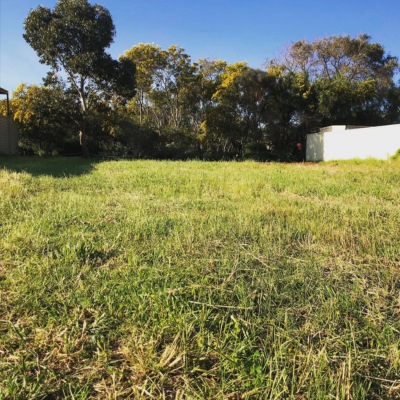
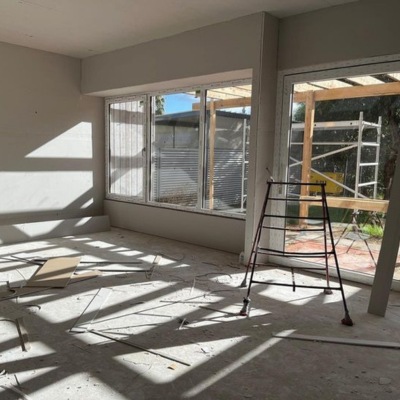
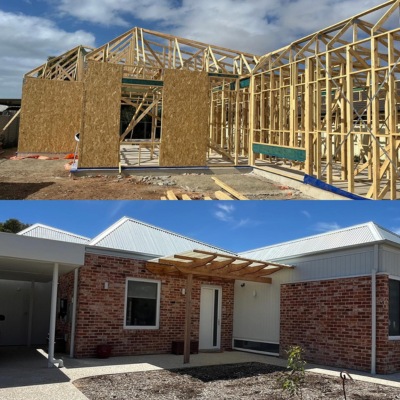
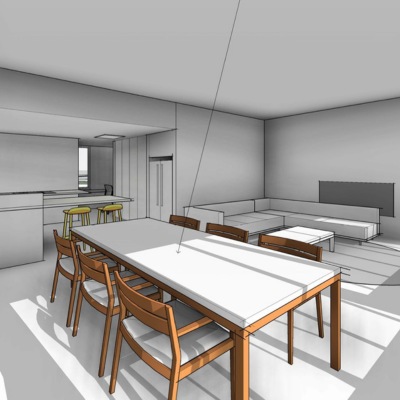
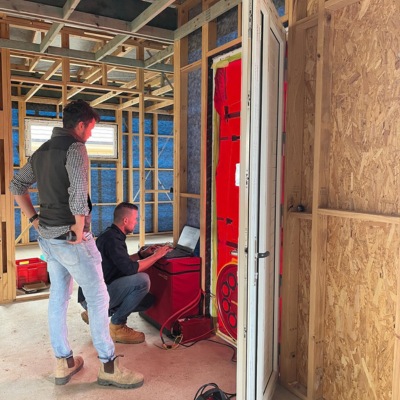
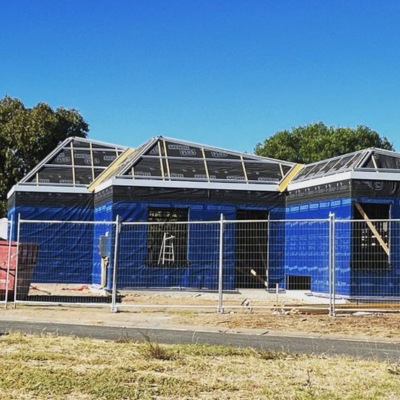

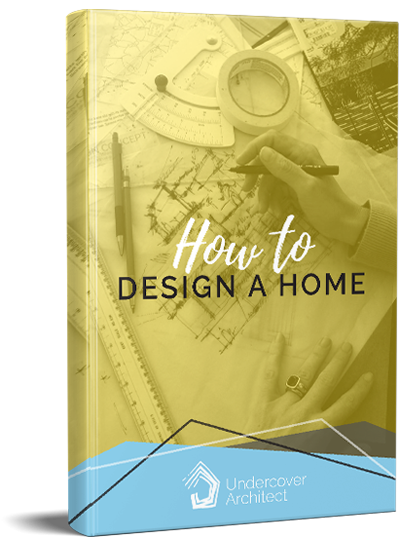
 With over 30 years industry experience, Amelia Lee founded Undercover Architect in 2014 as an award-winning online resource to help and teach you how to get it right when designing, building or renovating your home. You are the key to unlocking what’s possible for your home. Undercover Architect is your secret ally
With over 30 years industry experience, Amelia Lee founded Undercover Architect in 2014 as an award-winning online resource to help and teach you how to get it right when designing, building or renovating your home. You are the key to unlocking what’s possible for your home. Undercover Architect is your secret ally
Leave a Reply